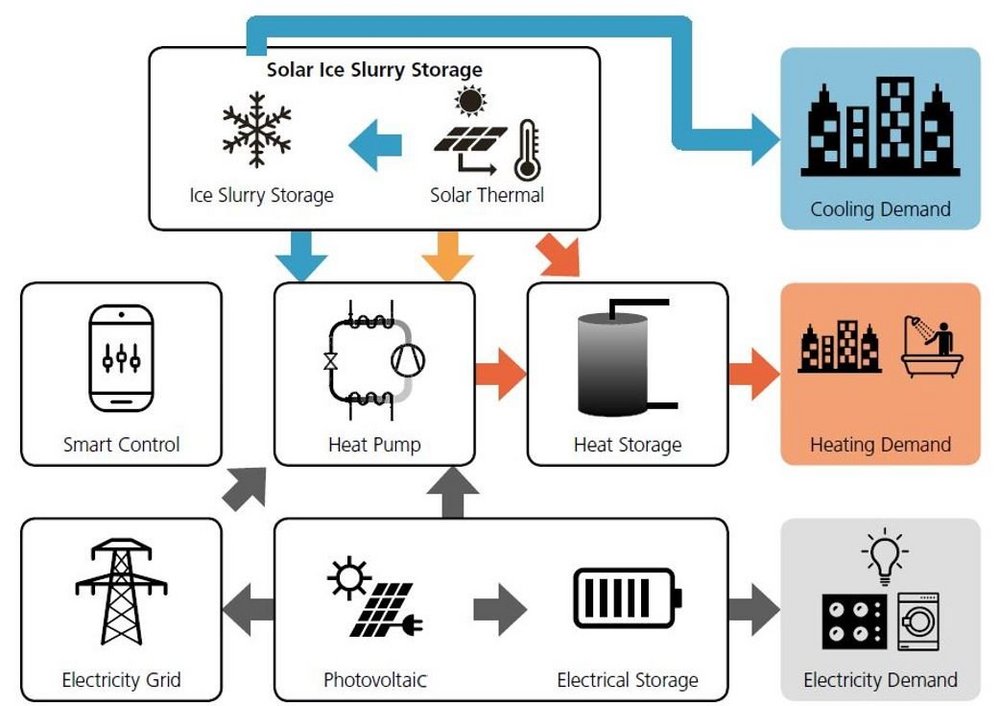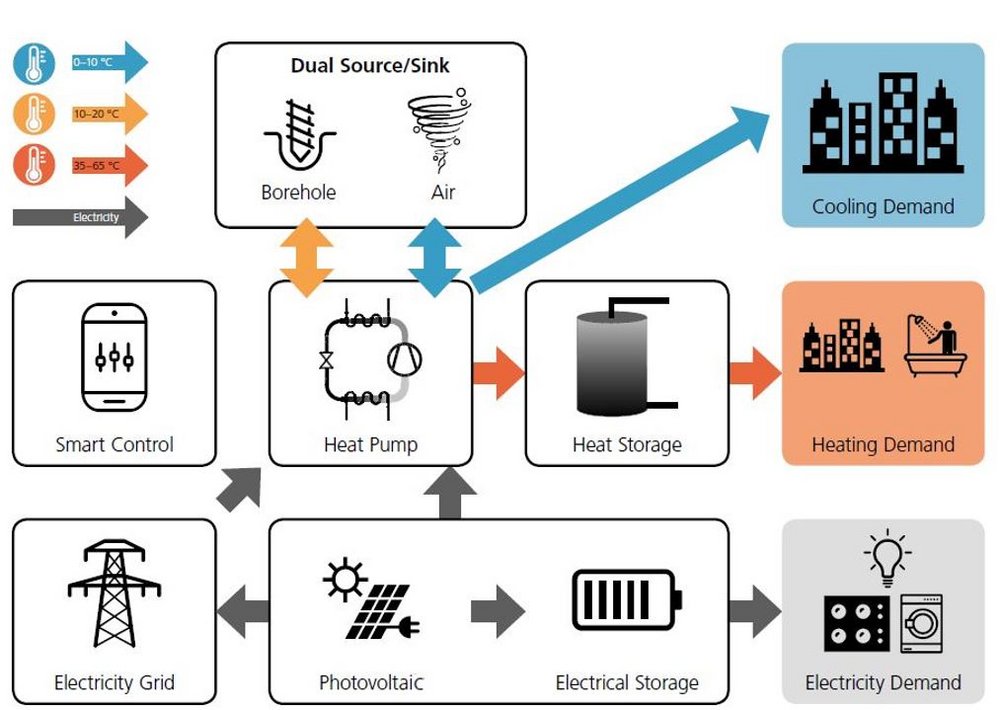TRI-HP systems


The TRI-HP systems will be based on electrically driven natural refrigerant heat pumps coupled with photovoltaics to provide heating, cooling and electricity to new and refurbished multi-family residential buildings with an on-site renewable share of 80%. The flexibility will be achieved by allowing the use of three heat sources: solar (with ice/water as storage medium), ground and ambient air.
Solar ice-slurry system
The solar ice-slurry system is a particular case of solar-ice systems which are based on using solar thermal collectors as the only heat source for the heat pump. As long as the sun shines or the ambient temperature is not too low, solar collectors act as a direct source for the heat pump. During cold nights or days with low irradiation, when the low-grade energy from the solar collectors is insufficient to run the heat pump directly, the ice storage is used as a temporary heat source. The ice storage can store low-grade heat from solar collectors with a high volumetric storage capacity, increasing the solar energy yield by a factor of two compared to a solar system without an ice storage. This system concept will be used for heating dominated climates with cooling as an add-on feature.
Dual source/sink system
The dual source/sink system will allow to use ground and air as heat sources or sinks benefiting of the best conditions at any time during the day. This will allow to increase performance and reduce the borehole length by 50 % reducing the installation cost by at least 15 %. Within the TRI-HP project, the dual-source system will be analysed for locations where heating and cooling are necessary.
System test methodology
The laboratory set-ups at SPF-HSR and IREC will be used to validate the systems using an accelerated concise cycle test (CCT), where the whole year will be represented by 15 days distributed on three sets (winter, summer, and spring or autumn) of 5 testing days. The CCT is based on a hardware in-the-loop approach, where the key components of the systems such as thermal and electrical storages, heat pumps, hydraulics, and system control will be installed physically and other components such as solar thermal collectors, PV, and ground heat exchangers will be simulated and emulated.